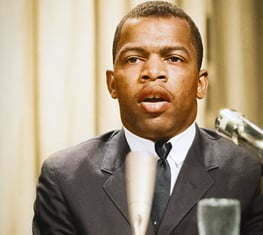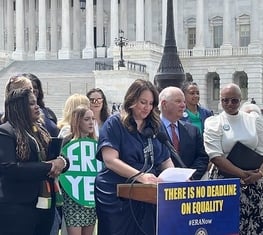LWV Communications 101
Everything a League does involves communications: voter services, Citizen information, advocacy, membership, fundraising, etc.
Everything a League does involves communications: voter services, Citizen information, advocacy, membership, fundraising, etc. The target audience may be internal/external or both. The key is making sure that your League’s message is focused, that it is heard and understood, and that it will have the maximum impact on the intended audience. To be effective, a communications strategy cannot be undertaken as an afterthought. It must be built into every activity and project on the League’s agenda.
Visibility
The League’s visibility in the community or state depends largely on how successful it is in getting stories carried by the print and electronic media. This requires knowing the media and how they function, analyzing the political forces in the community working for or against a particular issue, taking the pulse of public opinion, making a realistic assessment of the League’s resources that can be committed to a particular project, and recognizing and promoting the League’s niche or perspective on a story. (Note that template press releases on League issues, projects and member recruitment are frequently available on the League Web site.
Every League needs a permanent address and phone number. For those without offices, this should be a post office box and a telephone with voice mail, both of which need to be monitored routinely and often. To facilitate a uniform image of the League, it is advisable for every League to use the League’s registered (trademarked) logo on all publications, League letterhead and the Web site. (Downloadable logo files and standards for use of the League logo are on the League Web site.)
Web site
Every League should have its own Web site, which should be linked to the national League Web site. A Web site is the League’s face to the community—both the public and its members. It should be informative—but not so densely packed with information that it cannot be read easily. It should be a useful way for the public to become informed about League issues and about election information. The Web site should be well designed, easily navigable, and updated on a regular basis. Its URL should be short, easy to remember and as widely publicized as possible so that people can find it. LWVUS encourages Leagues, especially those without websites, to use My League Online (MyLO), created by the LWV of California. It is an easy to use and affordable option.
E-mail is an essential tool for communication among different levels of the League and between members of a given League. It is essential that every League have access to e-mail and that members’ e-mail addresses are included in the national League member database so that they will receive regular updates sent out by the national League Board and staff.
Newsletter
A local League’s most basic tool for communicating with its members and the larger community is its newsletter. Every League should name its newsletter The Voter and include the League’s registered logo on the masthead. The board’s role is one of setting overall policy for the content and tone of the newsletter. A good newsletter should be an effective tool for membership involvement and retention; it should convey a sense of enthusiasm about the League’s accomplishments and expertise as well as communicate information to both members and the public.




